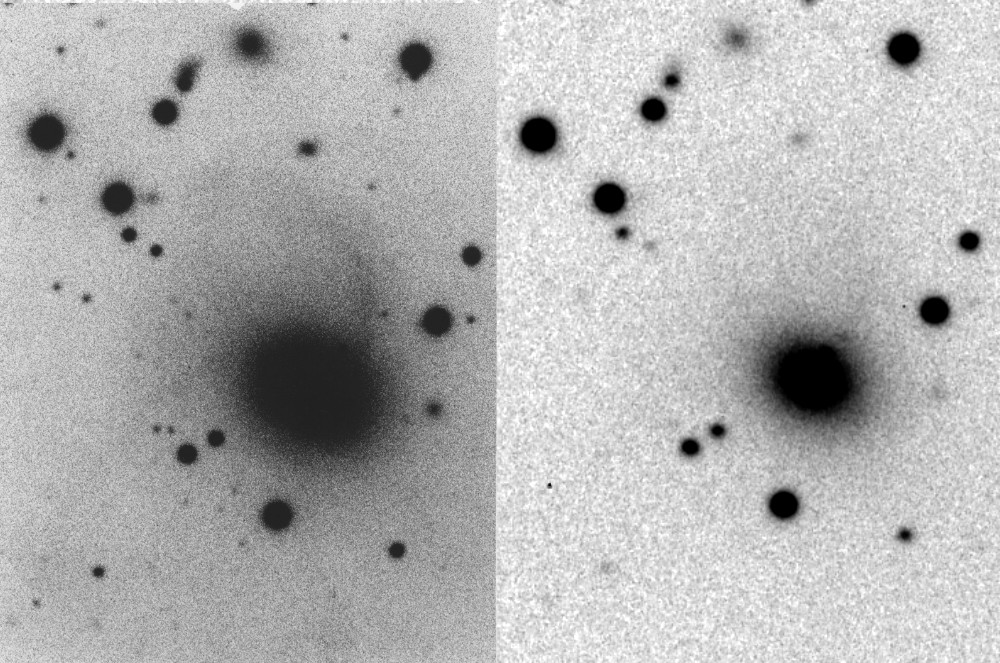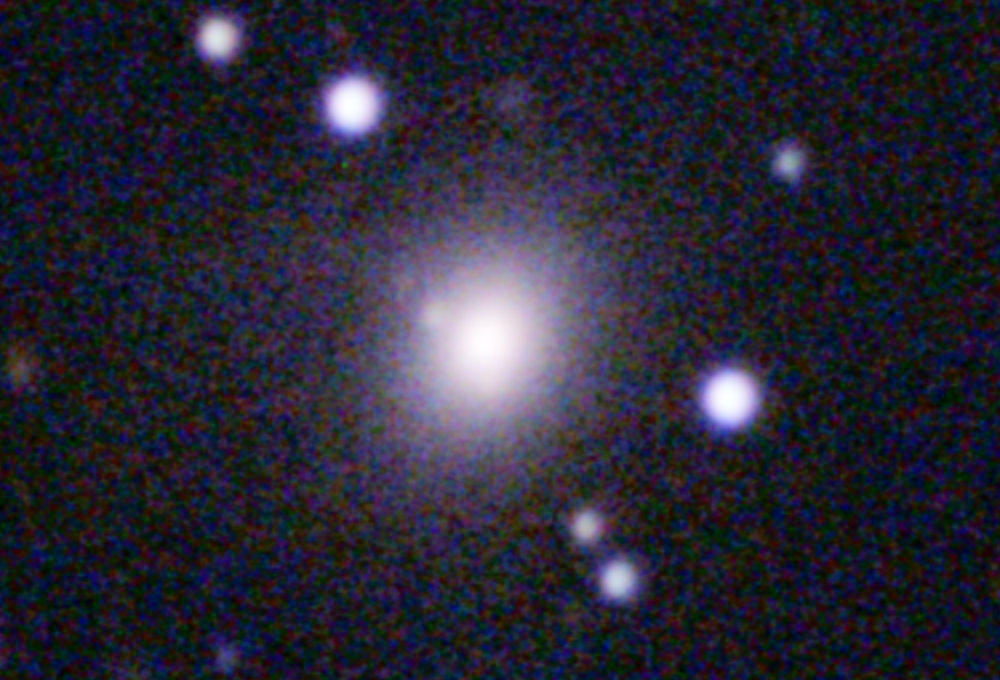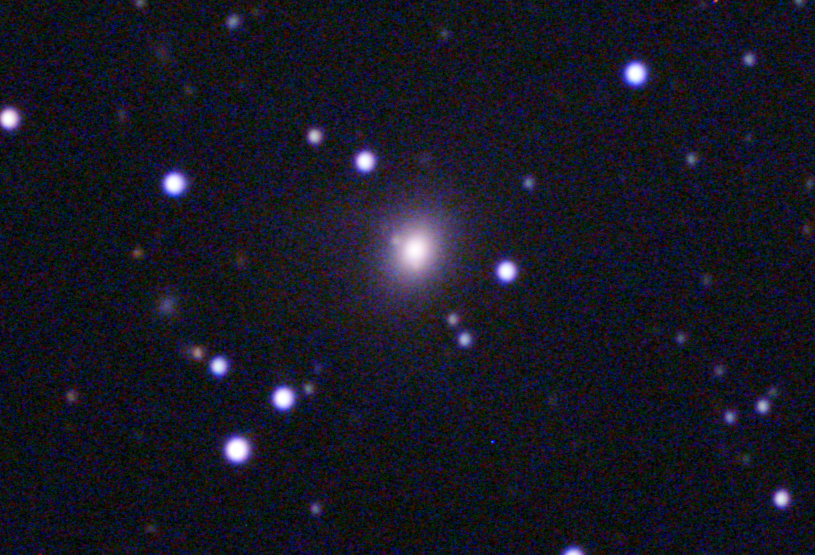| Description | This is one of my early Arp observations, and it benefited substantially when I reviewed it in preparation for submission. It was captured on an otherwise clear, moonless evening, when we experienced a thin layer of high clouds that limited integration time. The key problem then becomes how to process the image to show the "diverse filaments". My original processing of the color image wasn't terribly effective. I've since learned that working with a monochrome, inverse image -- even ones converted from an OSC color image -- can be very powerful. An advantage here is that other than converting to monochrome and tuning the white, black, and gamma levels, you really don't need to stretch the inverse image at all. The relatively low light gathering power of the EdgeHD also makes it easy to distinguish field stars (which are dark circles in inverse) versus small galaxies, which are light gray smears. Most of the darker filaments seem to point to such smears, particularly the main filament which you can see clearly in my capture at the root. It appears to point to three galaxies on a similar line, including the largest which is almost dead center on the north border of the comparison image. There's a second galaxy, just SE, and the smallest galaxy of the three, slightly SW, closer to NGC 2418. The 200" Hale telescope resolves the filament further up the image, but, hey, the Rockefeller's didn't pay for my telescope. It's worth looking at the color comparison image as these three galaxies are easily color-differentiated from the field stars and you can distinguish the core and disk on the two larger galaxies. Also in my capture, you can also see how some of the filaments are skewed NE towards several faint smears (N is up, East is counter clockwise from center), as well as NW towards another tiny galaxy.. The Hale telescope has so much light-gathering power that these tiny galaxies are nearly indistinguishable from field stars. |








